Growing Purple Peppers in Pots: Unlock the secrets to a vibrant, edible garden right on your patio! Have you ever dreamed of adding a splash of color and a burst of flavor to your meals, all from the comfort of your own home? Imagine plucking a perfectly ripe, deep purple pepper straight from its plant, knowing you nurtured it from seedling to harvest. It’s not just a dream; it’s an achievable reality with the right know-how.
The practice of container gardening, including growing purple peppers in pots, has roots stretching back centuries. From the hanging gardens of Babylon to the humble window boxes of European cottages, people have always found ways to cultivate beauty and sustenance in limited spaces. Today, with increasing urbanization and a renewed focus on sustainable living, container gardening is experiencing a major resurgence.
But why purple peppers? Beyond their stunning visual appeal, purple peppers are packed with antioxidants and offer a unique, slightly sweeter flavor compared to their green or red counterparts. And let’s be honest, who wouldn’t want to impress their friends and family with such a unique and beautiful addition to their garden and dinner table? This DIY guide will provide you with simple, step-by-step instructions and insider tips to ensure your success, even if you’re a complete beginner. I’m here to help you avoid common pitfalls and maximize your yield, so you can enjoy a bountiful harvest of delicious, vibrant purple peppers all season long. Let’s get started!
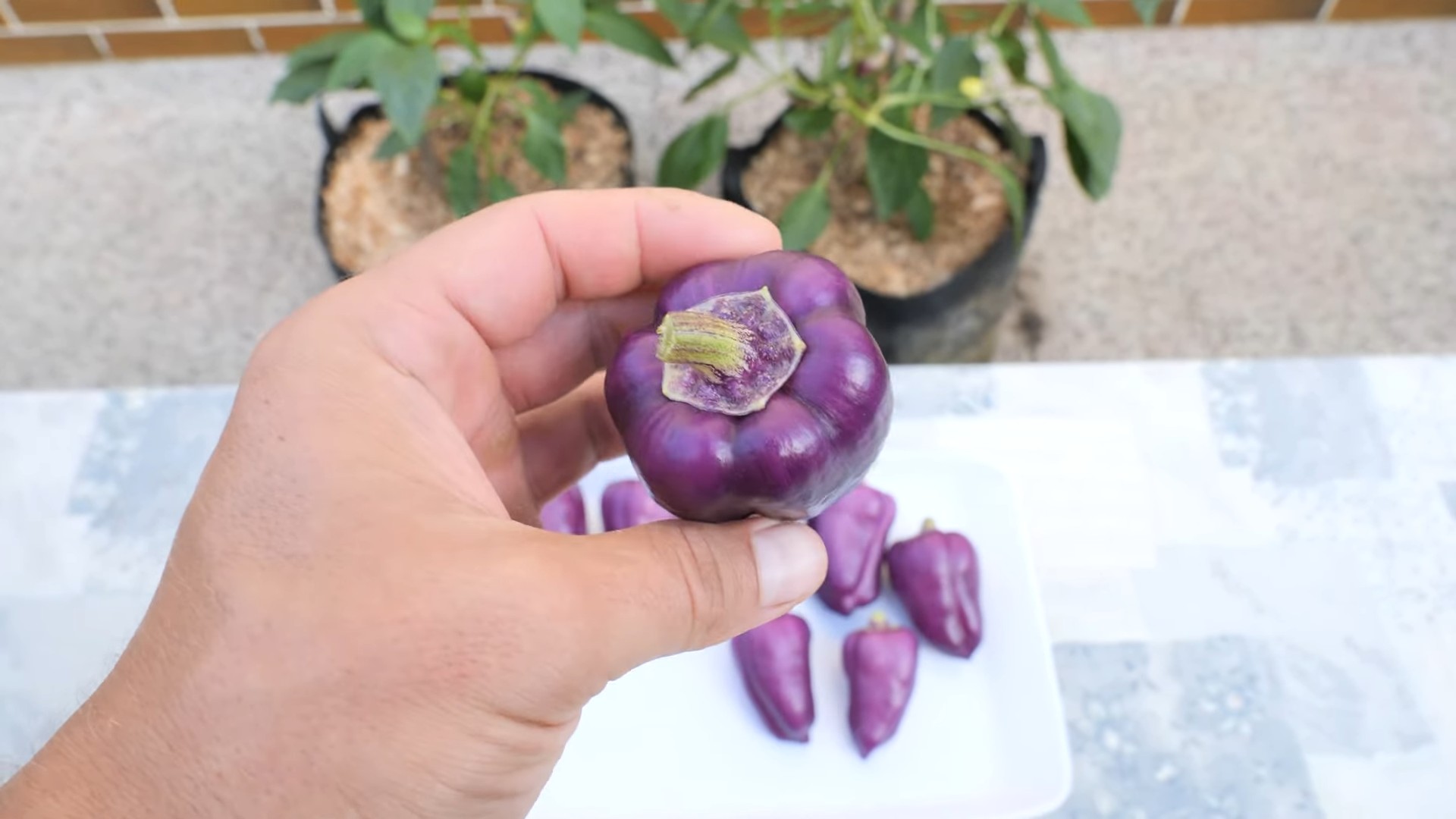
Growing Vibrant Purple Peppers in Pots: A DIY Guide
Hey there, fellow gardening enthusiasts! I’m so excited to share my experience with growing beautiful, vibrant purple peppers right in pots. It’s easier than you might think, and the results are absolutely stunning – both visually and taste-wise! This guide will walk you through every step, from choosing the right pepper variety to harvesting your delicious, homegrown purple peppers. Let’s get started!
Choosing Your Purple Pepper Variety
First things first, you need to decide which purple pepper variety you want to grow. There are several options, each with its own unique characteristics. Here are a few of my favorites:
* Purple Beauty: This is a classic choice, known for its bell-shaped peppers that mature from green to a deep, glossy purple. They’re relatively mild in flavor and perfect for salads or stuffing.
* Purple Jalapeño: If you like a little heat, the Purple Jalapeño is a fantastic option. These peppers start green and turn a beautiful dark purple as they ripen. They pack a decent punch of spice!
* ‘Oda’ Purple Bell Pepper: A newer variety, ‘Oda’ offers early maturity and excellent yields of blocky, deep purple bell peppers. They are known for their sweet flavor.
* Chinese Five Color Pepper: For a truly ornamental and edible option, consider the Chinese Five Color pepper. These peppers go through a rainbow of colors, including purple, as they mature. They are quite hot!
Consider your taste preferences and the space you have available when making your choice. I personally love the Purple Beauty for its versatility and mild flavor.
Gathering Your Supplies
Before you start planting, you’ll need to gather all the necessary supplies. Here’s a checklist:
* Purple Pepper Seeds or Seedlings: You can start from seeds or buy seedlings from a local nursery. Seedlings will give you a head start.
* Pots: Choose pots that are at least 12 inches in diameter and depth. Larger pots are better, as they provide more room for the roots to grow. Make sure the pots have drainage holes!
* Potting Mix: Use a high-quality potting mix that is well-draining. Avoid using garden soil, as it can become compacted in pots.
* Fertilizer: A balanced fertilizer (e.g., 10-10-10) or a fertilizer specifically formulated for peppers and tomatoes will work well.
* Watering Can or Hose: For watering your plants.
* Trowel: For planting and transplanting.
* Optional: Stakes or Cages: To support the plants as they grow, especially if you’re growing taller varieties.
* Gardening Gloves: To protect your hands.
Planting Your Purple Peppers
Now comes the fun part – planting your purple peppers! Whether you’re starting from seeds or seedlings, the process is relatively straightforward.
Starting from Seeds:
1. Start Seeds Indoors (6-8 weeks before the last frost): Fill small pots or seed trays with potting mix. Sow the pepper seeds about ¼ inch deep.
2. Keep Soil Moist and Warm: Water gently and keep the soil consistently moist but not soggy. A heat mat can help maintain a soil temperature of around 75-80°F (24-27°C), which is ideal for germination.
3. Provide Light: Once the seedlings emerge, provide them with plenty of light. A sunny windowsill or a grow light will work well.
4. Transplant Seedlings: Once the seedlings have developed a few sets of true leaves and the weather has warmed up, you can transplant them into larger pots.
Planting Seedlings:
1. Prepare the Pots: Fill the pots with potting mix, leaving a few inches of space at the top.
2. Remove Seedlings from Containers: Gently remove the seedlings from their containers, being careful not to damage the roots. If the roots are tightly bound, gently loosen them.
3. Plant the Seedlings: Dig a hole in the potting mix that is large enough to accommodate the root ball. Place the seedling in the hole and backfill with potting mix.
4. Water Thoroughly: Water the seedlings thoroughly after planting.
Caring for Your Purple Pepper Plants
Once your purple pepper plants are planted, it’s important to provide them with the proper care to ensure healthy growth and abundant yields.
1. Watering: Water your pepper plants regularly, especially during hot, dry weather. The soil should be consistently moist but not waterlogged. Check the soil moisture by sticking your finger into the soil. If the top inch feels dry, it’s time to water.
2. Fertilizing: Fertilize your pepper plants every 2-3 weeks with a balanced fertilizer or a fertilizer specifically formulated for peppers and tomatoes. Follow the instructions on the fertilizer label. I like to use a liquid fertilizer diluted in water for easy application.
3. Sunlight: Purple peppers need at least 6-8 hours of sunlight per day. Place your pots in a sunny location where they will receive plenty of direct sunlight.
4. Temperature: Peppers thrive in warm temperatures. The ideal temperature range is between 70-85°F (21-29°C). Protect your plants from frost and cold temperatures.
5. Pruning: Pruning can help improve air circulation and encourage bushier growth. Remove any yellowing or dead leaves. You can also pinch off the tips of the branches to encourage more branching.
6. Support: As your pepper plants grow, they may need support to prevent them from falling over. Use stakes or cages to support the plants, especially if you’re growing taller varieties.
7. Pest and Disease Control: Keep an eye out for pests and diseases. Common pests include aphids, spider mites, and whiteflies. Common diseases include blossom end rot and fungal infections. Treat any problems promptly with appropriate organic or chemical controls. I prefer using insecticidal soap for aphids and neem oil for fungal issues.
Harvesting Your Purple Peppers
The moment you’ve been waiting for – harvesting your beautiful purple peppers!
1. Harvest Time: Purple peppers are typically ready to harvest when they have reached their mature size and color. The exact timing will depend on the variety you’re growing. Purple Beauty peppers, for example, are usually ready to harvest about 70-80 days after transplanting.
2. Check the Color: The peppers should be a deep, vibrant purple color.
3. Gently Twist or Cut: To harvest the peppers, gently twist them off the plant or cut them off with a sharp knife or pruning shears. Be careful not to damage the plant.
4. Enjoy Your Harvest: Once you’ve harvested your purple peppers, you can enjoy them in a variety of ways. They’re delicious in salads, stir-fries, salsas, and stuffed peppers. You can also roast them, grill them, or pickle them.
Troubleshooting Common Problems
Even with the best care, you may encounter some problems while growing purple peppers. Here are a few common issues and how to address them:
* Blossom End Rot: This is a common problem that causes the bottom of the peppers to rot. It’s usually caused by a calcium deficiency. To prevent blossom end rot, make sure your soil is well-draining and that you’re providing your plants with adequate calcium. You can add calcium to the soil by using bone meal or eggshells.
* Aphids: These tiny pests can suck the sap from your pepper plants, causing them to weaken and become stunted. To control aphids, spray your plants with insecticidal soap or neem oil.
* Spider Mites: These tiny pests can also damage your pepper plants by sucking the sap from the leaves. To control spider mites, spray your plants with insecticidal soap or neem oil.
* Fungal Diseases: Fungal diseases can cause spots on the leaves and stems of your pepper plants. To prevent fungal diseases, provide good air circulation and avoid overwatering. Treat any infections with a fungicide.
Tips for Success
Here are a few extra tips to help you succeed in growing purple peppers in pots:
* Choose the Right Potting Mix: A well-draining potting mix is essential for growing healthy pepper plants in pots. Avoid using garden soil, as it can become compacted and prevent proper drainage.
* Water Regularly: Peppers need consistent moisture to thrive. Water your plants regularly, especially during hot, dry weather.
* Fertilize Regularly: Peppers are heavy feeders and need regular fertilization to produce abundant yields.
* Provide Plenty of Sunlight: Peppers need at least 6-8 hours of sunlight per day.
* Protect from Frost: Peppers are sensitive to frost and cold temperatures. Protect your plants from frost by bringing them indoors or covering them with a blanket.
* Be Patient: Growing peppers takes time and patience. Don’
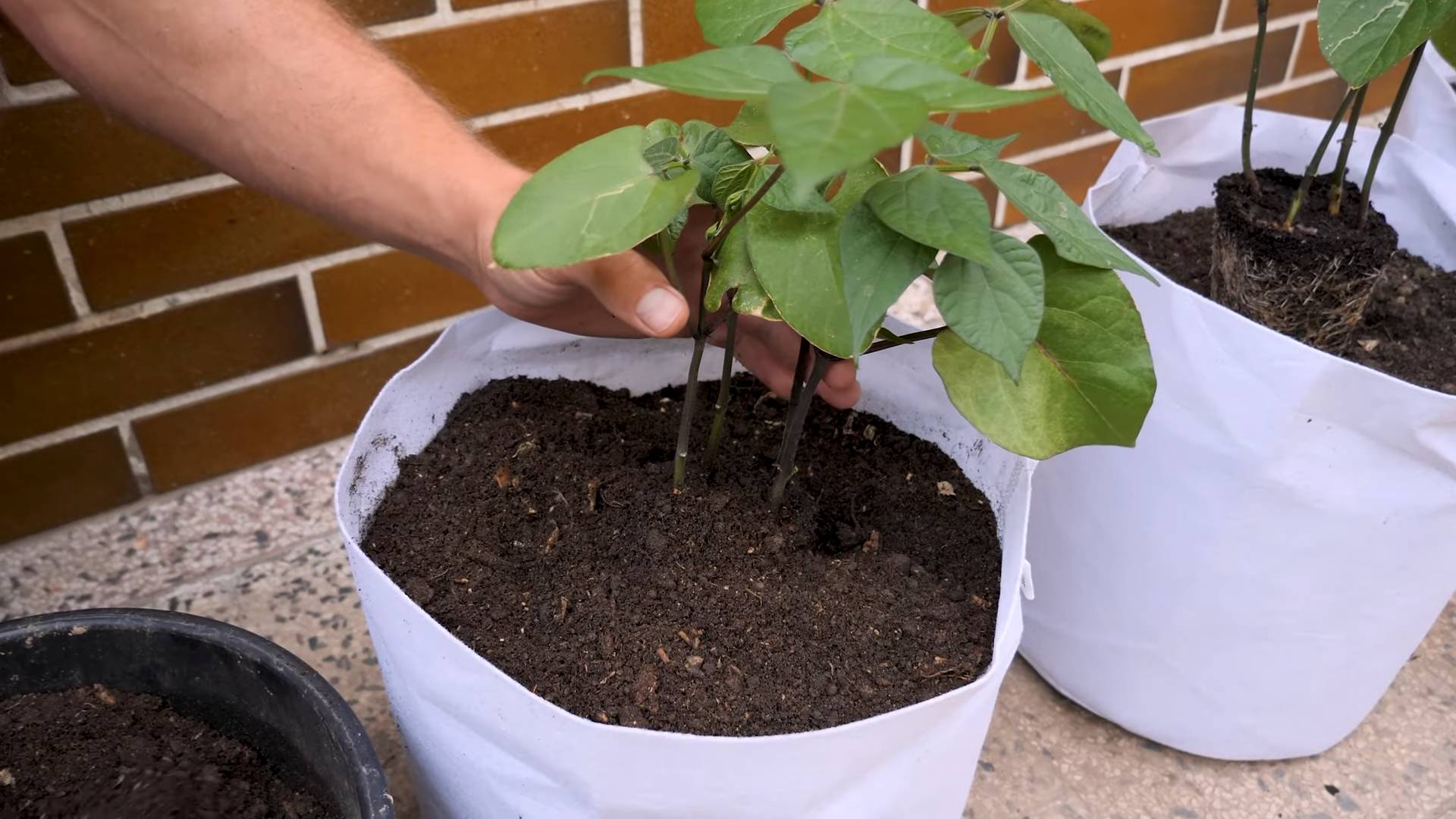
Conclusion
So, there you have it! Growing purple peppers in pots is not only achievable, but it’s also a deeply rewarding experience that brings a splash of vibrant color and delicious flavor right to your doorstep. We’ve walked through the essential steps, from selecting the perfect pot and soil to nurturing your plants with the right amount of sunlight and water. Remember, patience is key, and observing your plants closely will allow you to address any issues before they become major problems.
Why is this DIY trick a must-try? Because it empowers you to cultivate fresh, organic produce, regardless of your garden size. Imagine the satisfaction of harvesting your own beautiful purple peppers, knowing exactly where they came from and how they were grown. Plus, the striking color of these peppers adds a unique aesthetic appeal to your garden or balcony. They are conversation starters and a testament to your green thumb!
But don’t stop there! Experiment with different varieties of purple peppers. ‘Purple Beauty’ is a classic choice, but you might also enjoy the spicier ‘Purple Jalapeño’ or the ornamental ‘Black Pearl’ pepper. Consider companion planting to further enhance your pepper’s growth. Basil, marigolds, and carrots are all excellent choices that can deter pests and improve soil health. You can also try different potting mixes to see what works best for your specific environment. Some gardeners swear by adding compost tea to their watering routine for an extra boost of nutrients.
And if you’re feeling adventurous, why not try saving the seeds from your best peppers to grow even more plants next season? It’s a fantastic way to continue the cycle and develop your own unique strain of purple peppers adapted to your local climate.
We are confident that with a little care and attention, you’ll be enjoying a bountiful harvest of homegrown purple peppers in no time. Don’t be intimidated by the process; even if you’re a beginner gardener, you can successfully grow these stunning vegetables.
Now, it’s your turn! We encourage you to embrace this DIY project and embark on your own purple pepper growing adventure. Share your experiences with us! We’d love to hear about your successes, challenges, and any unique tips or tricks you discover along the way. Post photos of your plants, share your favorite recipes using your homegrown peppers, and let’s create a community of passionate purple pepper enthusiasts. Happy gardening!
Frequently Asked Questions (FAQ)
What is the best size pot for growing purple peppers?
A pot that is at least 12 inches in diameter and 12 inches deep is generally recommended for growing purple peppers. This size provides enough space for the roots to develop properly and allows for adequate drainage. Larger pots, such as those that are 5-10 gallons, are even better as they provide more room for growth and can help retain moisture, especially in hotter climates. Remember to choose a pot with drainage holes to prevent waterlogging, which can lead to root rot.
What type of soil is best for growing purple peppers in pots?
Purple peppers thrive in well-draining, nutrient-rich soil. A good potting mix should be a blend of peat moss, perlite, and vermiculite. You can also amend your potting mix with compost or aged manure to provide additional nutrients. Avoid using garden soil in pots, as it can become compacted and doesn’t drain well. The ideal pH level for purple peppers is between 6.0 and 7.0. You can test your soil’s pH using a soil testing kit and adjust it accordingly with lime (to raise pH) or sulfur (to lower pH).
How much sunlight do purple peppers need?
Purple peppers need at least 6-8 hours of direct sunlight per day to thrive. Choose a location for your pots that receives plenty of sunlight throughout the day. If you live in a particularly hot climate, you may need to provide some afternoon shade to prevent the plants from getting scorched. If you don’t have enough natural sunlight, you can supplement with grow lights.
How often should I water my purple pepper plants in pots?
Water your purple pepper plants regularly, especially during hot, dry weather. The soil should be kept consistently moist, but not waterlogged. Check the soil moisture by sticking your finger about an inch into the soil. If it feels dry, it’s time to water. Water deeply, until water drains out of the drainage holes. Avoid watering the foliage, as this can promote fungal diseases.
What are some common pests and diseases that affect purple peppers, and how can I prevent them?
Common pests that affect purple peppers include aphids, spider mites, and whiteflies. You can prevent these pests by regularly inspecting your plants and removing any infested leaves. You can also use insecticidal soap or neem oil to control these pests. Common diseases that affect purple peppers include blossom end rot, fungal leaf spot, and powdery mildew. To prevent these diseases, ensure good air circulation around your plants, avoid overwatering, and use a fungicide if necessary. Blossom end rot is often caused by calcium deficiency, so you can add calcium to the soil or use a calcium-rich fertilizer.
When should I harvest my purple peppers?
You can harvest your purple peppers when they have reached their mature size and color. The exact time will depend on the variety of pepper you are growing. Generally, purple peppers are ready to harvest about 60-80 days after transplanting. The peppers should be firm and have a deep, vibrant purple color. Use pruning shears or a sharp knife to cut the peppers from the plant, leaving a small stem attached.
Can I grow purple peppers indoors?
Yes, you can grow purple peppers indoors, but you will need to provide them with adequate light. Place your plants near a sunny window that receives at least 6-8 hours of direct sunlight per day. If you don’t have enough natural light, you can supplement with grow lights. You will also need to ensure that your plants have good air circulation and are watered regularly.
What are some good companion plants for purple peppers?
Good companion plants for purple peppers include basil, marigolds, carrots, and onions. Basil helps to repel pests, while marigolds attract beneficial insects. Carrots and onions can help to improve soil health. Avoid planting purple peppers near fennel or brassicas (such as cabbage and broccoli), as these plants can inhibit their growth.
How do I fertilize my purple pepper plants in pots?
Fertilize your purple pepper plants every 2-3 weeks with a balanced fertilizer. Look for a fertilizer that is specifically formulated for vegetables. You can also use a liquid fertilizer or a slow-release fertilizer. Follow the instructions on the fertilizer package for application rates. Avoid over-fertilizing, as this can lead to excessive foliage growth and fewer peppers.
My purple pepper plant is producing flowers, but no peppers. What could be the problem?
There are several reasons why your purple pepper plant might be producing flowers but no peppers. One common reason is lack of pollination. Peppers are self-pollinating, but sometimes they need a little help. You can gently shake the plant or use a small brush to transfer pollen from one flower to another. Other possible reasons include temperature stress (too hot or too cold), lack of water, or nutrient deficiencies. Make sure your plant is getting enough sunlight, water, and fertilizer.

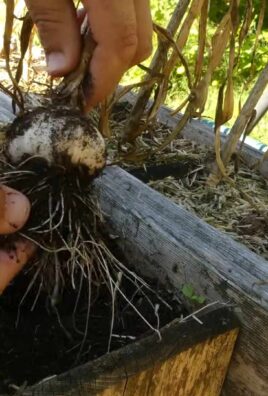
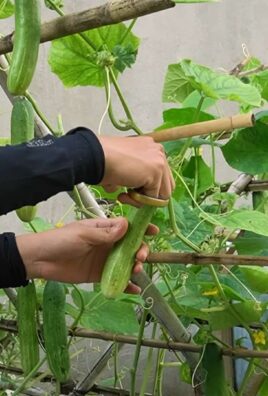
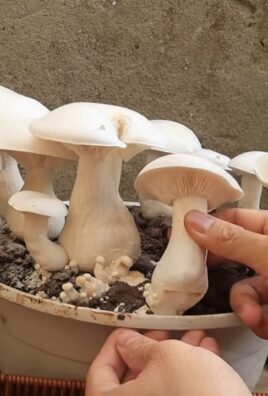
Leave a Comment